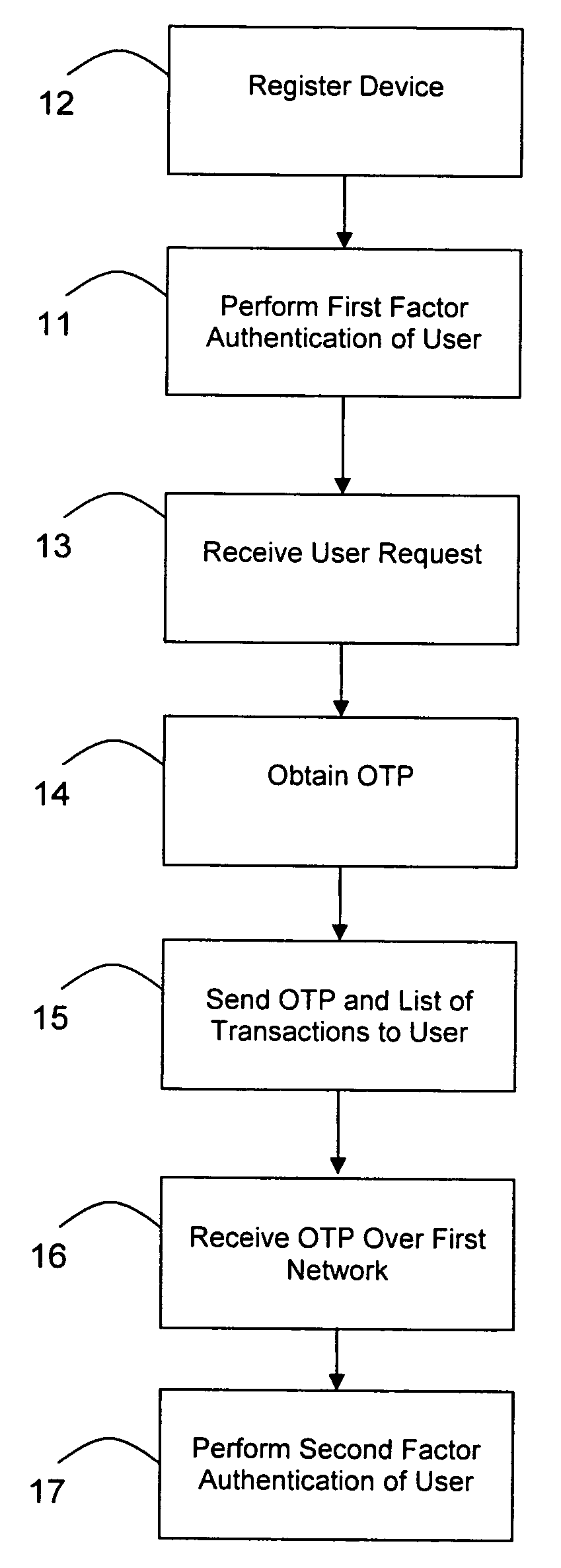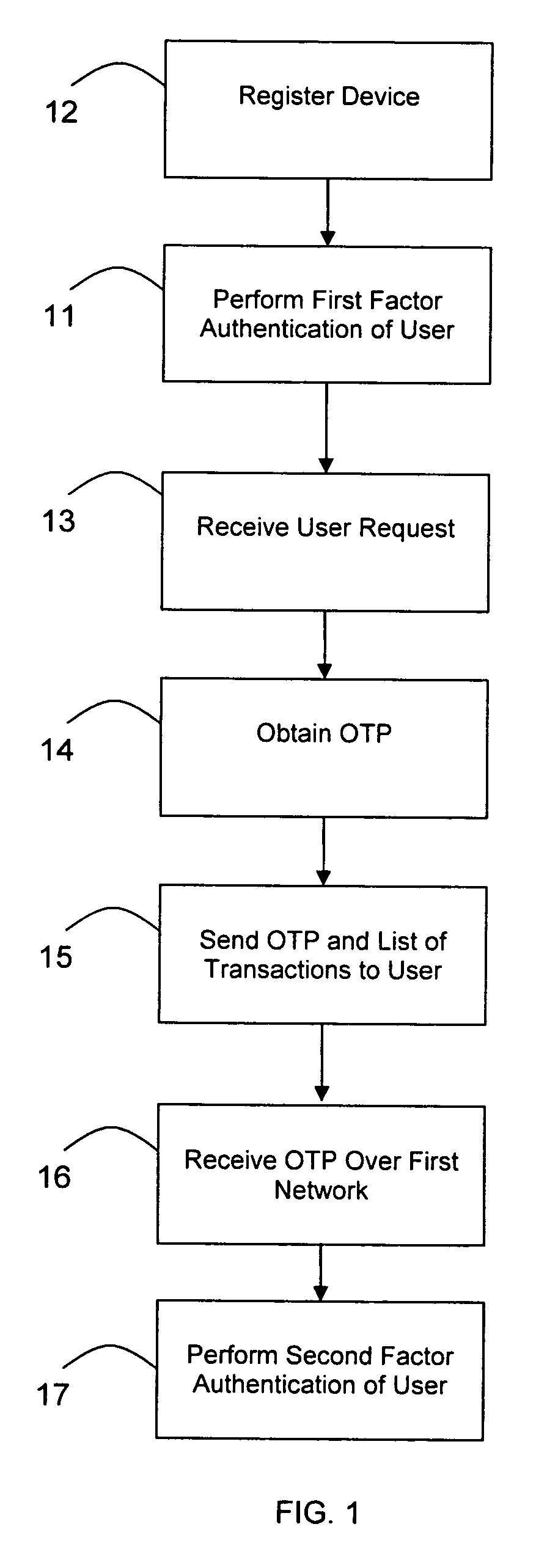Transaction authentication over independent network
a technology of independent network and transaction authentication, applied in the field of transaction verification and user authorization, can solve the problems of insufficient protection for users conducting financial transactions, perceived as “risky, and inability to empirically verify
- Summary
- Abstract
- Description
- Claims
- Application Information
AI Technical Summary
Benefits of technology
Problems solved by technology
Method used
Image
Examples
embodiment
Preferred Embodiment
[0030]Referring to FIGS. 4-7, there is illustrated the preferred embodiment of the method and the collection of networks and computer systems over which it may be performed. The authentication system 22 first registers 12 the user's 21 cell phone 51 for use in the method by receiving 12a the phone number of the cell phone 51 from the vendor's central computer system 43. Upon receipt 12a of the phone number the authentication system 22 stores 12b it in the registration database 29.
[0031]The vendor's web server 42 hosts web content including the vendor's web page and a login page that are sent over the internet 23 to the user's computer 41 when the user 21 points his web browser to the vendor's web address. The web server 42 is configured so that data can be sent back and forth between the authentication system 22 and web server 42 over the internet 23. The authentication system 22 performs the first factor authentication 11 of the user 21 by first receiving 11a no...
example 1
Financial Institution and Account Holder
[0044]Referring to FIGS. 4-7, the method is used by a financial institution having a website and an internet application, both hosted on the web server 42, that allow account holders to make payments out of their accounts online. The user 21 opens an account through a financial institution employee. As part of the account setup, the user 21 gives the employee the identifier for his communication device 25, which is the phone number for the user's 21 cell phone 51. The user's cell phone 51 is capable of receiving text messages over an SMS network 33. The employee enters the phone number into the authentication system 22, which registers 12 the cell phone 51 by storing the phone number in the registration database 29.
[0045]Later, the user 21 decides to pay three bills from his account using the financial institution's website and internet application. The bills are $250.00 owed to Utility Co., $2300.00 owed to Mortgage Co., and $500.00 owed to C...
example 2
Debit Over Internet, Request Over Second Network
[0047]Referring to FIGS. 4 and 8, the method is used by a financial institution to allow account holders to use their debit cards to make purchases from an online merchant that has been evaluated and approved by the financial institution. The merchant has a website and an internet application, both hosted on the web server 42, that allow the user to open and access an online account with the merchant.
[0048]The user 21 visits a location of the financial institution and opens an account through an employee. As part of the account setup, the user 21 receives a debit card and sets his permanent PIN. Further, to use his debit card online, the user 21 gives the employee the identifier for his communication device 25, which is the phone number for the user's 21 cell phone 51. The user's cell phone 51 is capable of receiving text messages over an SMS network 33. The employee enters the user 21 information, debit card number, and phone number i...
PUM
 Login to View More
Login to View More Abstract
Description
Claims
Application Information
 Login to View More
Login to View More - R&D
- Intellectual Property
- Life Sciences
- Materials
- Tech Scout
- Unparalleled Data Quality
- Higher Quality Content
- 60% Fewer Hallucinations
Browse by: Latest US Patents, China's latest patents, Technical Efficacy Thesaurus, Application Domain, Technology Topic, Popular Technical Reports.
© 2025 PatSnap. All rights reserved.Legal|Privacy policy|Modern Slavery Act Transparency Statement|Sitemap|About US| Contact US: help@patsnap.com



